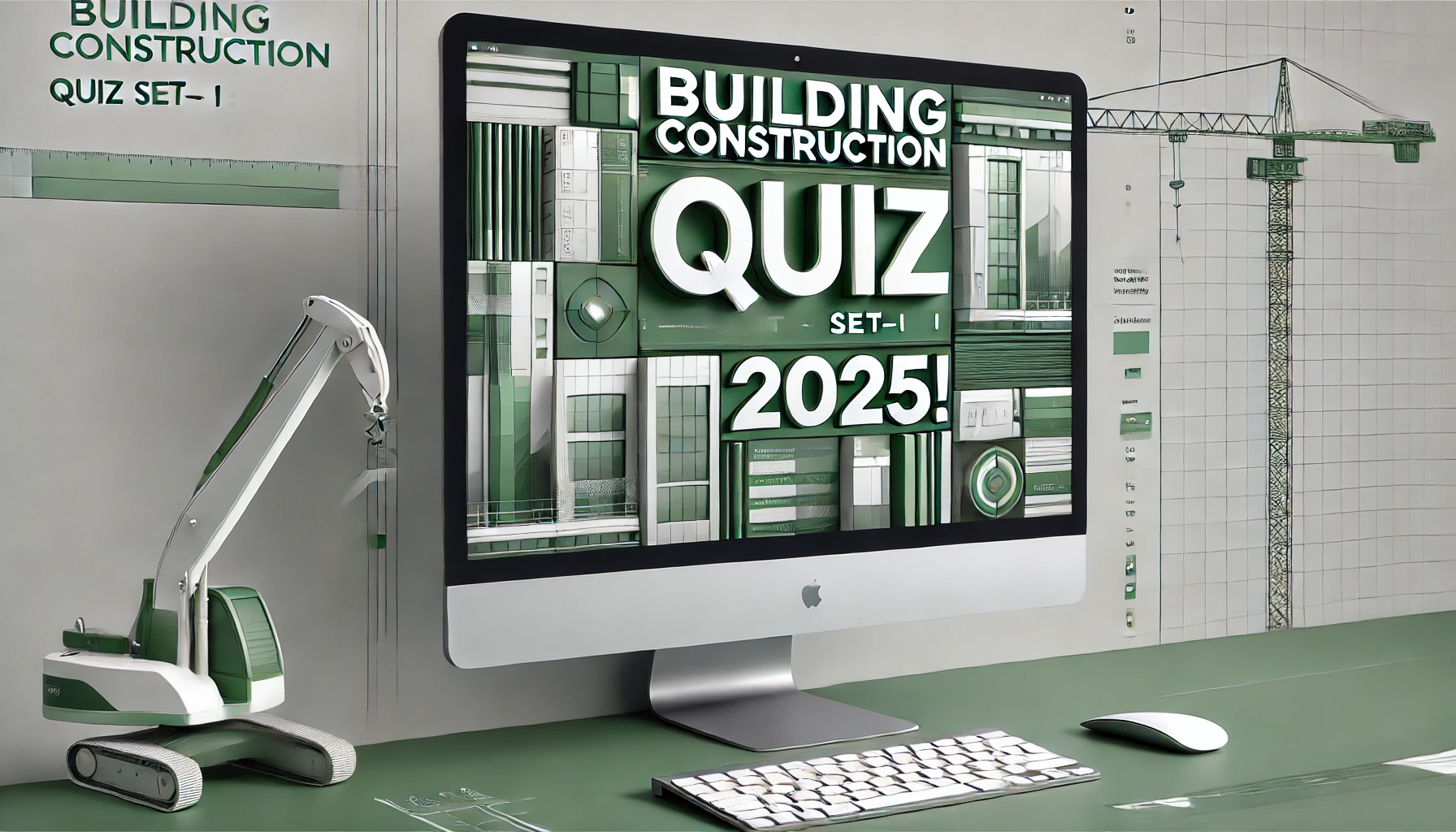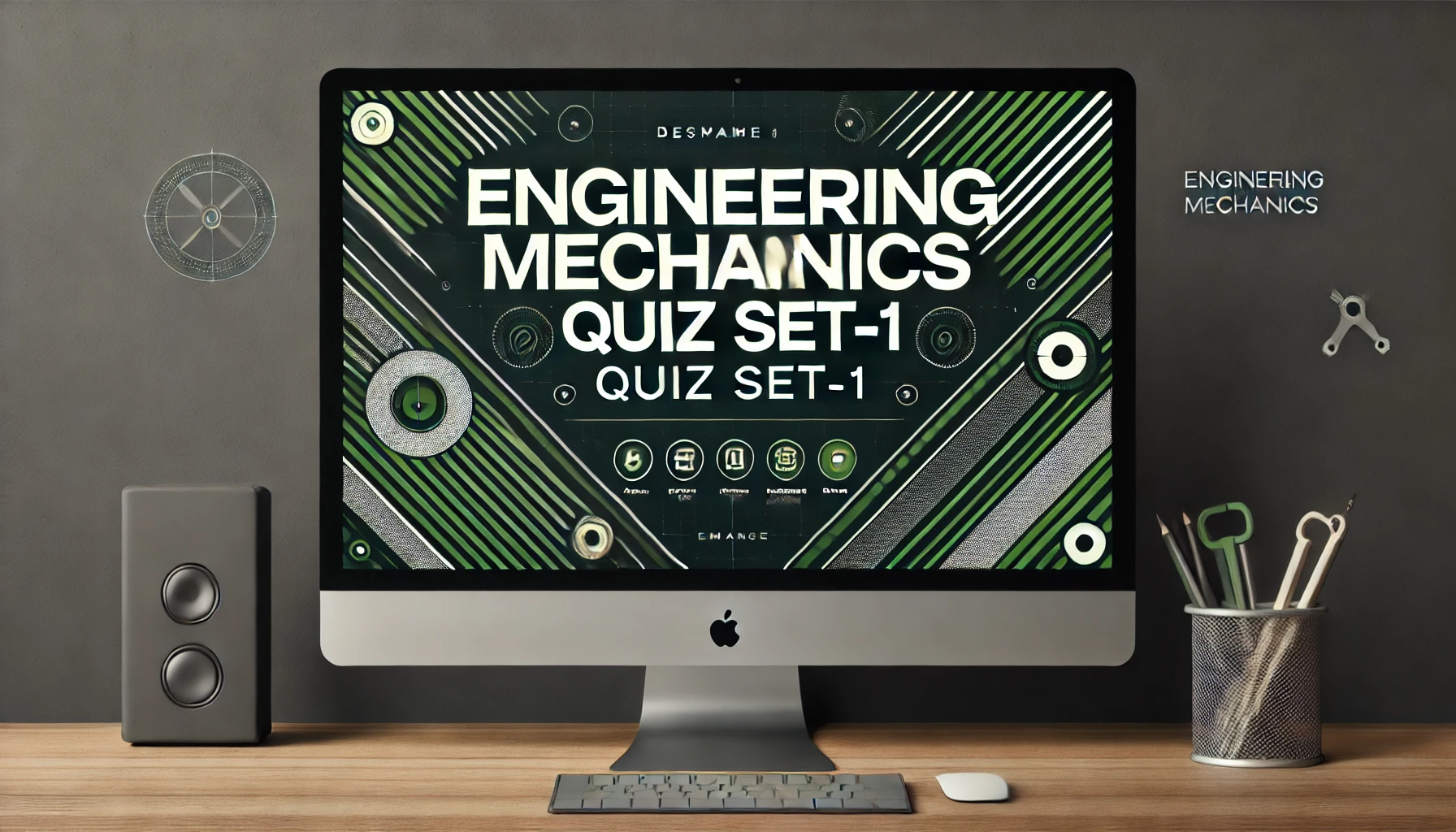Building Construction Quiz Set-1 [2025]”!
Welcome to “Building Construction Quiz Set-1 [2025]”! In this blog, we’ve curated 50+ thought-provoking multiple-choice questions covering the fundamental and advanced concepts of building construction. “Building Construction Quiz Set-1 [2025]” is designed to help you refresh your basics, challenge your knowledge, and gain practical insights into construction techniques, materials, and principles. Whether you’re a civil engineering student, a construction professional, or preparing for competitive exams, this quiz is the perfect way to enhance your expertise in building construction. Let’s dive into the “Building Construction Quiz Set-1 [2025]” and start exploring! Building Construction: The Foundation of Modern Infrastructure Building construction is an essential aspect of civil engineering that involves the design, planning, and creation of structures to support human activity. From residential homes to skyscrapers, roads to bridges, building construction plays a pivotal role in shaping the world we live in. In this blog, we will explore the key aspects of building construction, including its principles, processes, materials, and innovations that are revolutionizing the industry. What is Building Construction? Building construction refers to the process of assembling materials and components to create structures. These structures can range from residential, commercial, and industrial buildings to infrastructure projects like bridges, dams, and tunnels. The process requires a combination of engineering expertise, architectural design, and skilled labor to ensure safety, functionality, and aesthetics. Principles of Building Construction The construction of a building is guided by several core principles: Structural Integrity: Ensuring the building can withstand loads and forces, such as gravity, wind, and earthquakes. Functionality: Designing spaces that meet the needs of their intended use, whether residential, commercial, or industrial. Sustainability: Using materials and techniques that minimize environmental impact and promote energy efficiency. Aesthetics: Creating visually appealing structures that blend with their surroundings. Safety: Adhering to building codes and standards to protect occupants and the public. Key Stages of Building Construction Building construction typically involves the following stages: Planning and Design: Developing architectural designs and engineering plans. Conducting feasibility studies and obtaining necessary permits. Budgeting and resource allocation. Site Preparation: Clearing the land and leveling the ground. Conducting soil testing and site surveys. Installing temporary utilities and access roads. Foundation Construction: Laying the foundation, which can be shallow (e.g., spread footing) or deep (e.g., pile foundation). Ensuring the foundation can support the weight of the structure and prevent settling. Structural Framing: Constructing the skeleton of the building using materials like steel, concrete, or wood. Installing beams, columns, and load-bearing walls. Enclosure and Roofing: Adding exterior walls, windows, and doors to enclose the structure. Installing the roof to protect against weather elements. Interior Finishing: Adding plumbing, electrical, and HVAC systems. Finishing floors, walls, and ceilings. Installing fixtures and fittings. Inspection and Handover: Conducting safety and quality inspections. Handing over the completed project to the client. Common Materials Used in Building Construction Concrete: Widely used for foundations, walls, and floors due to its strength and durability. Steel: Provides high tensile strength and is used in structural frames and reinforcements. Bricks and Blocks: Common for walls and partitions due to their affordability and ease of use. Timber: Popular for residential construction and aesthetic purposes. Glass: Used for windows, facades, and decorative elements. Composite Materials: Combining two or more materials to enhance properties like strength and insulation. Innovations in Building Construction The construction industry is constantly evolving, with innovations driving efficiency, sustainability, and creativity. Some noteworthy advancements include: 3D Printing: Creating building components and even entire structures using automated 3D printers. Modular Construction: Prefabricating sections of a building off-site and assembling them on-site. Green Building Techniques: Using renewable energy systems, sustainable materials, and energy-efficient designs. Building Information Modeling (BIM): Utilizing digital tools to design, visualize, and manage construction projects. Smart Buildings: Integrating IoT (Internet of Things) technology for automated lighting, heating, and security systems. Challenges in Building Construction Despite advancements, the construction industry faces several challenges: Cost Overruns: Unanticipated expenses can inflate project budgets. Delays: Weather, labor shortages, and supply chain disruptions can slow progress. Safety Risks: Construction sites pose risks of accidents and injuries. Environmental Impact: Resource consumption and waste generation can harm the environment.

